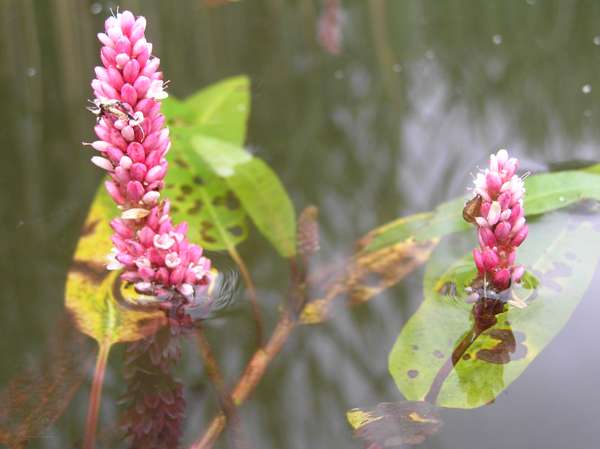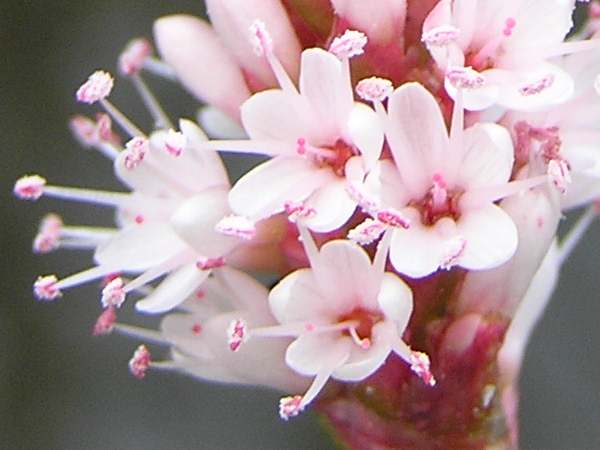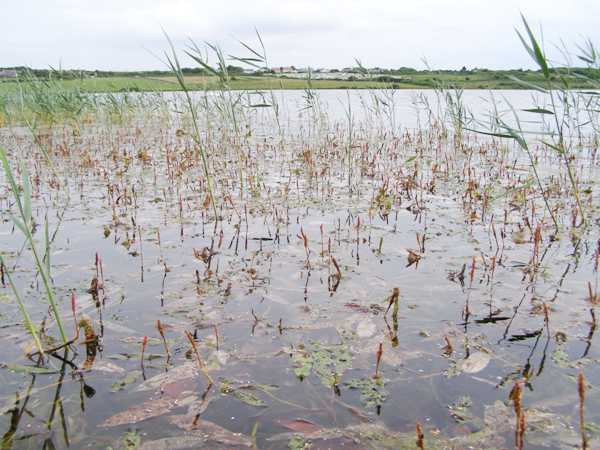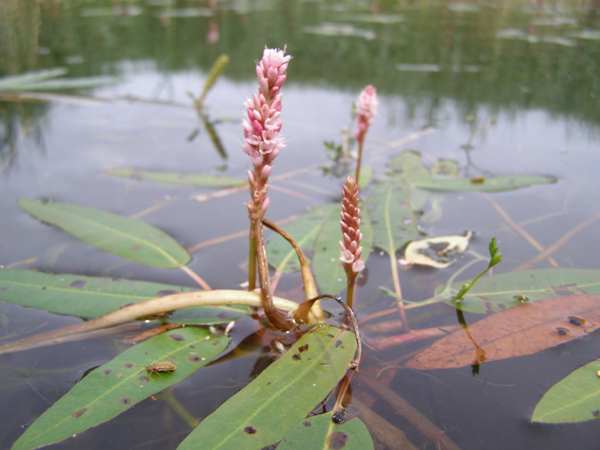Persicaria amphibia - Amphibious Bistort
Phylum: Magnoliophyta - Class: Equisetopsida - Order: Caryophyllales - Family: Polygonaceae

Amphibious Bistort, a perennial member of the Knotweed family, has two forms; one grows in water with leaves that float on the surface, while the other grows on land that can be quite some distance from water.
In the shallow margins of ponds and lakes, Amphibious Bistort creates a wonderful flush of colour which often encroaches onto the shore, where its leaves become elongated rather than heart-shaped as they are in water.

Description
Creeping stems of Amphibious Bistort produce flowers in dense spikes that stand upright; when in water they usually reach a height of 15 to 25cm, but on land this plant can grow to 40cm and occasionally more. Each little flower corolla is typically just 3 to 4mm long and has five pink petal-like segments and five protruding stamens.
Distribution
Persicaria amphibia is fairly common and widespread across most of Britain and Ireland but absent from some parts of northern Scotland. This species is native to most of mainland Europe and occurs also in parts of Asia and in North America. This plant is also recorded in South Africa, where it is considered to be a native wildflower. Elsewhere Amphibious Bistort is probably an introduced species and in some parts of the world it is an invasive alien weed.

Habitat
Amphibious Bistort thrives in ponds, lakes and slow-flowing fresh water, but remarkably this plant can also grow on bare dryish ground that is not inundated for long periods. Shown on this page is the aquatic form of Persicaria amphibia. The terrestrial form produces much more sparse floral displays, even on stems growing from the same rootstock as some nearby aquatic stems.
Blooming Times
In Britain and Ireland Persicaria amphibia produces a continuous display of flowers from early July through to the end of September.
Uses
Apart from being a colourful aquatic plant for bog gardens and ponds, Amphibous Bistort is not generally considered to have much value as either a source of food or of herbal medicines.

There are reports from Asia of this plant being grown as fodder for farmed animals and that it also had some medicinal properties; however, it is known to contain toxins that can aggravate various human ailments including gout, and so great caution is necessary when considering whether to use the leaves either for food or for medicine.
Etymology
Persicaria, the generic name, relates the shape of leaves of this group of plants to those of a peach tree. Just as it sounds, the specific epithet amphibia refers to the fact that this plant can live either in water or on dry land, as animal amphibians can, of course.
Similar Species
Redshank Persicaria maculosa is a weed of muddy farm gateways and other areas of damp bare ground. Dark arrowhead-shaped patches on the leaves help identify this unimpressive plant.
Water-pepper Persicaria hydropiper has a peppery taste; its drooping or nodding spikes of flowers are whitish.
The Amphibious Bistort pictures shown on this page were taken at Kenfig Pool, which is part of Kenfig National Nature Reserve, near Bridgend in South Wales.
Please Help Us: If you have found this information interesting and useful, please consider helping to keep First Nature online by making a small donation towards the web hosting and internet costs.
Any donations over and above the essential running costs will help support the conservation work of Plantlife, the Rivers Trust and charitable botanic gardens - as do author royalties and publisher proceeds from books by Pat and Sue.



